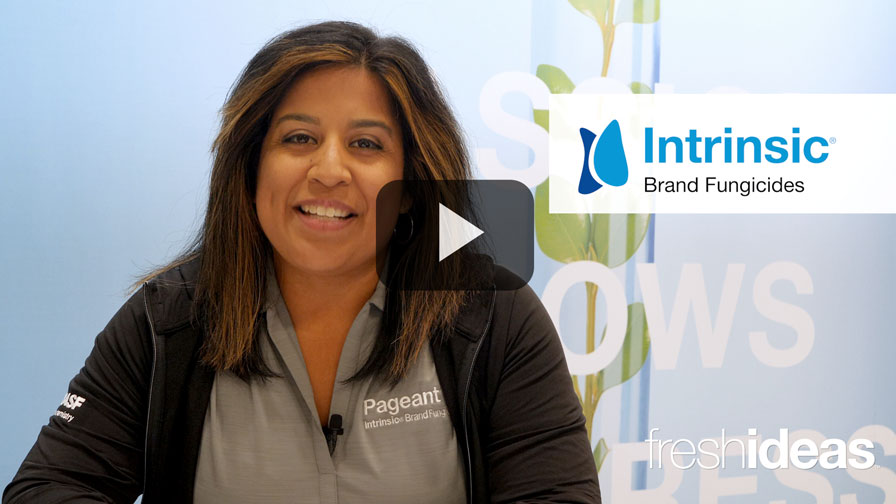What Greenhouse Growers Need to Know About Taxes and Transition Planning for 2022
The new year is just beginning, but it’s never too early to think about tax implications for the coming year and beyond. With the latest release of the “Build Back Better” plan and the recent signing of the infrastructure bill into law, Greenhouse Grower thought it would be a good time to catch up with Senior Manager Abbie Everist and Manager Elizabeth Swanson of KCoe Isom to discuss some of the recent tax updates and their implications for owners of controlled-environment greenhouse operations.
KCoe Isom is one of the leading food and agricultural consulting and accounting firms in the U.S. that provides a variety of business services such as tax and accounting, financial advice, next-gen services, sustainability services, and technology consulting.
Greenhouse Grower (GG): What are some of the tax updates owners of controlled-environment greenhouse operations need to know about heading into this coming year?

Abbie Everist, KCoe Isom
Abbie Everist: At the end of the year, the IRS issues guidance for inflation updates, and several items are indexed for inflation. It is even more notable this year because we have seen the biggest increase in inflation for two or three decades. There will be an impact, and much of it is positive. By increasing the inflation amount in your tax brackets, the lower brackets are bigger, so your average tax rate is lower overall. That is something to look at along with your standard deductions. People who are on Social Security also get these adjustments.
GG: We had several companies in the industry apply for and receive PPP funding. Does that affect anything at all with getting ready for this coming year?
Elizabeth Swanson: In most states, it doesn’t. Most states are following the federal rule, which is that PPP forgiveness is not taxable income. The forgiveness will be taxable for greenhouses in California that received a second-round loan, or a first-round loan after March 31, 2021, so that is something to keep in mind as you’re planning your taxable income and any additional deductions you want to take before the end of the year. Again, most other states are following the federal rules. Those are really specific to states as to whether some of the PPP forgiveness might be considered taxable income.
GG: Is there anything in proposed tax reform that will have any sort of an impact?
Everist: In Build Back Better, the name of the latest tax reform act, the biggest thing we see impacting businesses is the government is looking to apply the net investment income tax, which is the 3.8% that’s levied currently on primarily passive earnings over certain threshold amounts. They want to apply that towards portions of S-corporation income that flow through to an individual. Previously, those have been excluded. Now, if an organization is set up as an S corporation, it gets its K-1 and it flows through to an individual. Once that individual’s adjusted gross income exceeds $400,000 for a single filing and $500,000 for married filing joint, now any income above those amounts, if they have that active interest in an S corporation, would be subject to that additional tax.
Another large item is if a qualified small business is established as a C corporation and is looking at sales or transfers. Under the 1202 rules, there are limitations on that exclusion applying to them. In some circumstances, they could qualify for a 75% to 100% gain exclusion. Under the new proposal the government is again looking at that $400,000 threshold, where those individuals would be limited to a 50% exclusion.
Basically, there will be a little bit of an impact on businesses, regardless of the type of entity. On the individual side, the government is wanting to raise the state local income tax deduction on an individual’s Schedule A from $10,000 to somewhere in the ballpark of $70,000 to $80,000. People who are in those high-income tax states such as California, New York, Illinois, Minnesota, and Iowa are going to get a higher deduction. The 2017 Act switched from more of an increase-the-standard-deduction approach to limit the number of people who were itemizing, but now that the government is talking about lifting that cap more individuals will be itemizing again. I believe legislators want to raise that cap for 10 years, so it’s not a permanent increase. This is one of the items they are still working through the dollar amounts and the number of years it would apply.

Beth Swanson, KCoe Isom
Swanson: Additionally, one of the proposals that has been consistent throughout the process is making permanent the excess business loss limitation. That limitation is essentially in addition to the net operating loss rules where if you have a loss coming through a pass-through entity onto your individual return you are limited to the amount of loss that can offset your other income. The limit is $500,000 of net business loss. In addition to having your net operating loss limitation, you also could be limited even further by that excess business loss rule. It prevents pass-through owners from taking advantage of all the losses they’re experiencing, whether it’s a year where you have a lot of bonus depreciation that’s driving your income down or any other reason. This is not a new provision. It is currently one in existence that will expire at the end of 2025. The new rules, however, would make it permanent. Other main items we are seeing from an individual perspective would be an extension of the higher child tax credit and expansion of the earned income tax credit for individuals who are working and don’t have qualifying children.
With the change in focus from tax rate changes and other rule changes that would impact a wide group of Americans to focusing on the millionaire and billionaire taxes and the large corporation taxes, there’s a lot less in the Build Back Better bill that would impact the average taxpayer. For most of the bill, there’s a little bit less planning that’s needed for the end of the year to anticipate those changes.
GG: Is there anything in the Build Back Better bill that KCoe Isom is tracking and focusing on that would have an impact on the industry?
Swanson: We are focused on taxes, but our teams are also monitoring the additional payments the agriculture title has for energy efficiency and other sorts of climate change innovation. We’re monitoring the payments for cover-crop practices and other sorts of areas. We know there will be some benefits available to agricultural producers in the bill and where all those amounts ultimately shake out is something we’re keeping an eye on.
GG: As you know, this industry has experienced a strong past couple of years, and because of that there are several growers in the position to potentially add new equipment, retrofit their facilities, or expand their operations. Are there any financial implications or tax implications they need to think about as they plan for these activities in the coming year?
Everist: Business owners need to make sure they are not doing things that wouldn’t be deductible, even if they rolled it over for a certain number of years. That really is very specific to how big an expansion they are planning and what their other income is already. And then this isn’t necessarily on the expansion side, but they need to look at their operation to ensure their entity choice is still the most valuable one based on their business goals for the future.
GG: Succession planning is a constant concern in the industry. If a business owner is looking to retire or sell their business in the next year, are there any business or tax implications they need to keep in mind?
Everist: As far as transition planning goes, earlier this year there were a few proposals that would have affected the various estate planning tools business owners can use to transition ownership to the next generation and that would have changed the way capital gains are recognized on the gift of business assets. Those have not made it into final legislation, which is great from the perspective of not needing to be as concerned about any sort of rule changes as we look to the end of the year. It is, however, a good reminder for business owners, especially with how detrimental those changes would have been to people looking to transition their businesses, that now is the time to start talking to an advisor and getting a plan together if you are thinking about transitioning your business in the next five years. That way you know exactly what you need to do, and you have something in place before any of the rules do change.
I think it’s clear from as far as we got in the process with those potential estate and gift tax changes that it’s going to be on this administration’s agenda for the next several years. Having a plan together to anticipate those potential changes before they happen will make everyone’s lives easier in that the overall outcome will be better.
Swanson: A good example of this is the Trump administration doubling the unified credit exemption in 2017 from a base of $5 million to $10 million. That wasn’t a permanent measure, but it’s something people can still plan around if they start now.
Abbie mentioned there were items on the chopping block. When I look at previous legislation and the trials and tribulations it took to finally get it passed, one of the things I see in a similar situation right now is entity discounting and being able to reduce the value for gifting estate tax purposes based on a true fair market value when you have control and marketability issues. The Obama administration first brought up trying not to allow any discounting for intra-family transfers, but it went away when the Trump administration came in. Now again, in the House legislation proposal in September, it came out with a tax that said it wouldn’t allow discounting for passive assets. Well, that’s a big deal. And their list of passive assets includes real estate. Operations typically have real estate and think about successful operations that have reserves in excess of need for operating. Both of those things wouldn’t have been allowed to have a discount. In the October text of the House legislation those things were removed, but discounting has come on the chopping block twice, so that is something to do sooner rather than later.
The point is it is still important because there is no certainty as to when we won’t have these items available to help with estate planning. It’s difficult because we want to do everything we can based on an individual’s goals and what’s best for them, but there are limitations. We really prefer people to have options for variety. Those are good reasons to reach out to their advisors now to ensure they have access to all the tools available.










